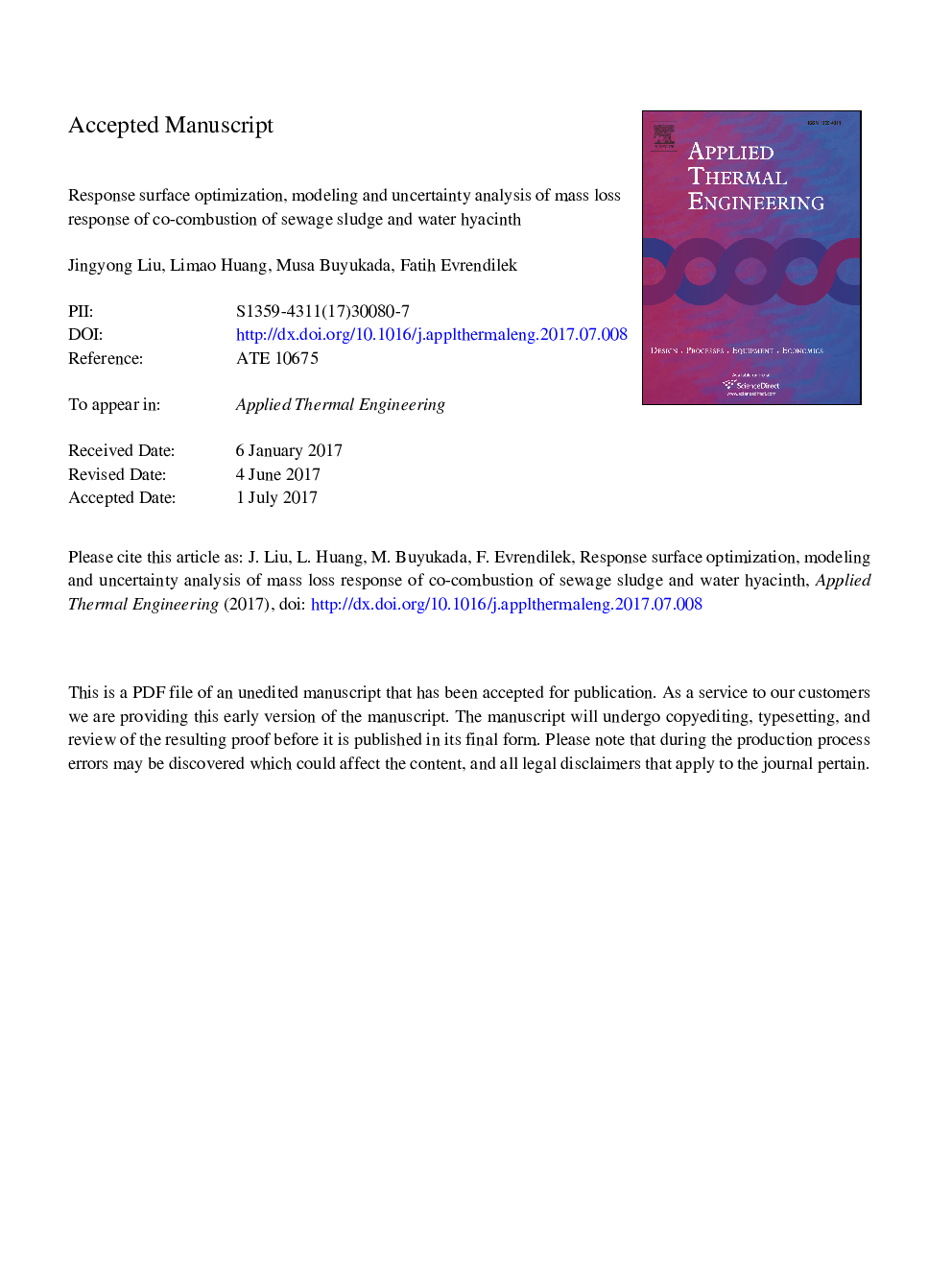| Article ID | Journal | Published Year | Pages | File Type |
|---|---|---|---|---|
| 4991188 | Applied Thermal Engineering | 2017 | 31 Pages |
Abstract
The present study aims at quantifying mass loss percentage (MLP, %) predictions and their stochastic uncertainty when co-combustion of sewage sludge (SS) and water hyacinth (WH) are applied as alternative biomass materials under different blend ratios (BR), heating rates (HR, °C/min) and temperatures (T, °C). Optimization and validation of experimental data through Box-Behnken design pointed to 630.9 °C for T, 60.1% SS for BR, and 29.9 °C/min for HR as the optimal co-combustion parameters to achieve the maximum MLP of 92.4%. Monte Carlo (MC) simulations were used to quantify uncertainty in MLP predictions of the best-fit multiple non-linear regression (MNLR) model derived from the entire experimental data as a function of MC-generated T as the only continuous predictor of the MNLR. Mean MLP value of the MNLR predictions was higher by 19% than that of the MC-simulated T whose mean was higher by only 1% than mean measured T. Incorporating the uncertainty estimation based on Monte Carlo simulations with response surface approach for co-combustion of SS and WH was one of the main novel contributors of the present study to related literature.
Related Topics
Physical Sciences and Engineering
Chemical Engineering
Fluid Flow and Transfer Processes
Authors
Jingyong Liu, Limao Huang, Musa Buyukada, Fatih Evrendilek,
